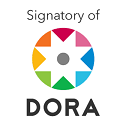Socioeconomic indicators of local municipal development in Santa Elena, Ecuador
Abstract
The objective of this article was to analyze the socioeconomic indicators of local municipal development in Santa Elena, Ecuador, considering their impact on the living conditions of the population and on local public management. The methodology was framed within a qualitative approach and a documentary research, based on the review and analysis of bibliographic sources in the Scielo, Scopus and Redalyc databases. The techniques employed were documentary observation and content analysis, while the instruments used included record cards, comparative matrices and thematic analysis guides. The results showed that employment, education, infrastructure and citizen participation indicators are determinants of municipal progress. It was concluded that the strengthening of local policies based on socioeconomic evidence has favoured the sustainable and equitable development of the territory.
Downloads
References
Carrascal, S., Ceballos, I., y Mejías, J. (2019). Retos de la educación como agente y paciente de los cambios socioculturales. Revista Prisma Social, (25), 424–438. https://n9.cl/bsh71
Código de Comercio. (2019). Registro Oficial Suplemento 497 de 29 mayo de 2019. https://n9.cl/sgwnl
Isea, J., Infante, M., Romero, A., y Comas, R. (2024). Human talent as a driving force in the management of ethics in the sustainable university. Salud, Ciencia y Tecnología - Serie de Conferencias, 3(672) 1-9. https://n9.cl/jbjohe
Isea, J., Gómez, I., y Comas, R. (2023). Interaction between university extension and curricular innovation: a collaborative and co-creative perspective in higher education. Revista Conrado, 19(3), 469-481. https://n9.cl/jz6dwg
Lastra, R. (2022). En defensa del dinero público digital. El trimestre económico, 89(356), 1007-1032. https://n9.cl/52rjtz
Medina, P., Arroba, Ítalo R., Arroba, M., y Morales, M. (2024). Estrategias de superación a directivos para mejorar la toma de decisiones en instituciones educativas. EPISTEME KOINONIA, 7(13), 110–129. https://n9.cl/zk34v
Mora, O., y Ramírez, R. (2022). Consecuencias financieras, contables y tributarias de las monedas virtuales en el mercado costarricense, un estudio exploratorio. Revista Nacional de Administración, 13(1), 1-14. https://n9.cl/90hkr
Palma, A. (2023). El desarrollo económico en el Ecuador: las criptomonedas y el derecho tributario. Revista San Gregorio, 1(56), 205-217. https://n9.cl/evxov
Peñalver, M., y Isea, J. (2024). Transformación hacia fábricas inteligentes: El papel de la IA en la industria 4.0. Ingenium et Potentia, 6(10), 38–53. https://n9.cl/1bxgx
Rahimi, A., y Mosalli, Z. (2024). The role of twenty-first century digital competence in shaping pre-service teacher language teachers’ twenty-first century digital skills: The Partial Least Square Modeling Approach (PLS-SEM). Journal of Computers in Education, 14(2), 1-19. https://n9.cl/8khf6k
Ricardo, M., y Ricardo, L. (2018). La dimensión ética en las competencias investigativas formativas: los inicios de una discusión. Revista Uniandes Episteme, 5, 946–965. https://n9.cl/b6tar
Salas, L., y Alfaro, M. (2022). Criptomonedas y su efecto en la estabilidad del sistema financiero internacional: Apuntes para Centroamérica. Revista Relaciones Internacionales, 95(1), 33-78. https://n9.cl/cvlxh9
Valencia, F. (2021). Panorama actual del bitcóin. Una descripción práctica y jurídica de las criptomonedas en Ecuador. Revista de derecho FORO, 36, 1-2. https://n9.cl/4lpto
Xu, E., Wang, W., y Wang, Q. (2023). The effectiveness of collaborative problem solving in promoting students’ critical thinking: A meta-analysis based on empirical literature. Humanities and Social Sciences Communications, 10(1), 1-11. https://n9.cl/xwuhn
Copyright (c) 2025 Cristhian Andrés Solórzano-Tomalá

This work is licensed under a Creative Commons Attribution-NonCommercial-ShareAlike 4.0 International License.
LICENCIA DE CONTENIDO
Creative Commons
Atribución-NoComercial-CompartirIgual 4.0 Internacional (CC BY-NC-SA 4.0)
Política propuesta para revistas que ofrecen acceso abierto
Aquellos autores/as que tengan publicaciones con esta revista, aceptan los términos siguientes:
Usted es libre de:
Compartir — copiar y redistribuir el material en cualquier medio o formato
Adaptar — remezclar, transformar y construir a partir del material
La licenciante no puede revocar estas libertades en tanto usted siga los términos de la licencia
Bajo los siguientes términos:
Atribución — Usted debe dar crédito de manera adecuada, brindar un enlace a la licencia, e indicar si se han realizado cambios. Puede hacerlo en cualquier forma razonable, pero no de forma tal que sugiera que usted o su uso tienen el apoyo de la licenciante.
NoComercial — Usted no puede hacer uso del material con propósitos comerciales.
CompartirIgual — Si remezcla, transforma o crea a partir del material, debe distribuir su contribución bajo la lamisma licencia del original.
No hay restricciones adicionales — No puede aplicar términos legales ni medidas tecnológicas que restrinjan legalmente a otras a hacer cualquier uso permitido por la licencia.
DERECHOS DE AUTOR Y PERMISO
La revista permite que los autores tengan los derechos de autor sin restricciones.
La revista permite que los autores conserven los derechos de publicación sin restricciones; y garantizan a la revista el derecho de ser la primera publicación del trabajo.


















